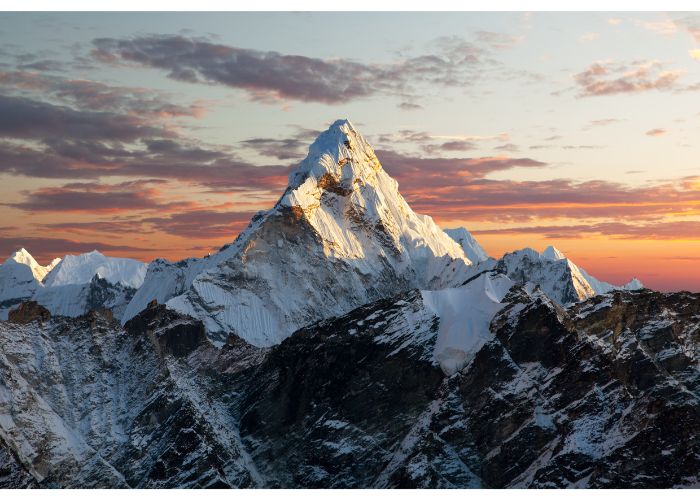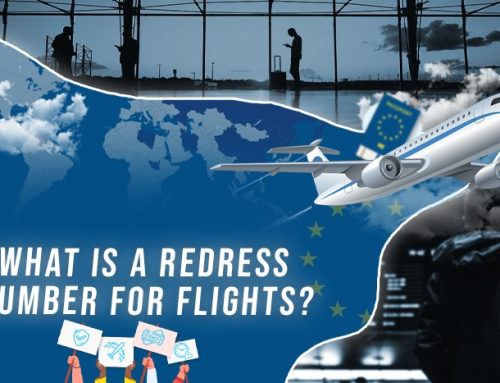Mount Everest is the tallest mountain on earth, standing nearly 30,000 feet above the ground. Many people have tried to climb it and failed. If you can’t climb it, can you fly to it or over it? It’s technically possible for an airplane to fly over Mount Everest, but they typically won’t.
The highest a plane can go is between 30,000 feet and 42,000 feet, depending on the aircraft. With Mount Everest standing nearly that tall in the air, that’s too close for comfort for most pilots to try flying over it. Trying to do so could cause the plane to fail and crash.
Key Takeaways
- Mount Everest’s towering height, nearly 30,000 feet above ground level, poses significant challenges for aviation. Most commercial planes have an operational ceiling between 30,000 and 40,000 feet, making flying over the mountain impractical due to its proximity to their maximum altitude capabilities.
- Flying over Mount Everest is not safe for several reasons. The mountain generates hazardous weather conditions, including turbulence, updrafts, and downdrafts, which can be dangerous for aircraft. The unpredictable winds and terrain make it challenging for pilots to maintain control, even with autopilot assistance.
- Only one person has ever successfully landed on the summit of Mount Everest. French pilot Didier Delsalle achieved this feat briefly on May 14, 2005, using a specially-equipped helicopter. However, due to the treacherous conditions, subsequent attempts at landing on the summit have been unsuccessful.
- Pilots and GPS systems are cautious when navigating around Mount Everest to avoid its hazards. There are safer routes available for aircraft to fly without compromising on passenger safety. Emergency crews would face significant challenges reaching a downed plane in such remote and rugged terrain.
- As of now, flying over Mount Everest remains unfeasible for most aircraft. However, ongoing advancements in aviation technology might pave the way for safer high-altitude operations in the future. Nevertheless, climbing the mountain remains the most viable way to enjoy its majestic views.
Why Don’t Planes Fly Over Mount Everest?
It’s not safe to fly over Mouth Everest – and not just because it’s so high in the air. It also generates weather conditions that are unsafe, including turbulence. If the plane tried to avoid it, it could potentially crash into the mountain. Sometimes, planes can rapidly decelerate, which would put them in the path of the mountain with no ability to navigate.
Mount Everest’s peaks and valleys also generate wind conditions that can make it hard to control a plane, even with autopilot on. Combine that with a commercial plane’s inability to maneuver quickly, flying over Mount Everest would most certainly be a recipe for disaster.
If there were a crash, emergency crews would likely be unable to reach them for help, so if the travel route brings a plane near Mount Everest, the pilot and GPS will navigate around it rather than over it. Most planes are not capable of flying much higher than 42,000 feet above sea level, so it’s not worth the risk to fly over it.
Has Anyone Landed On Mount Everest?

Currently, only one person has landed on the summit of Mount Everest. French pilot Didier Delsalle took a helicopter to the top on May 14, 2005. He landed for 3 minutes and 50 seconds before returning back to the Tenzing-Hillary Airport in Lukla, Nepal.
This flight was a test for the Airbus AS350 B3, which was said to handle higher altitudes. It was possible because Delsalle deftly navigated the updrafts and downdrafts, using next to no power. He tried again the next day with no luck, and no one has successfully completed the landing on Mount Everest since.
Conclusion
Mount Everest is beautiful, but if you want to enjoy the views over it, you’ll need to start training to climb to the top. Unfortunately, while planes that can reach up to 42,000 miles above the ground could technically clear the mountain, it’s too close for comfort. There are a lot of variables that make flying over Mount Everest unsafe, so pilots avoid the route with an abundance of caution.
Because there are safer routes available, there is no reason that a plane should attempt to fly over Mount Everest. To this day, only one person has been successful at landing on the summit, and no one has been able to match that accomplishment since.
Frequently Asked Questions
-
Are there any aircraft capable of flying over Mount Everest’s summit?
While some specialized military or research aircraft might have higher operational ceilings than commercial planes, there are no standard passenger airliners capable of safely flying over Mount Everest’s summit due to the mountain’s extreme height and the associated hazards.
-
What kind of weather conditions does Mount Everest create that are dangerous for flights?
Mount Everest generates turbulent weather conditions, including strong updrafts and downdrafts, which can lead to severe turbulence. These conditions can be challenging for pilots to manage, and the mountain’s height can also cause sudden changes in weather patterns, further complicating flight operations.
-
Has there been any effort to make flying over Mount Everest safer in the future?
While there have been no successful attempts to fly over Mount Everest’s summit with standard passenger aircraft, ongoing advancements in aviation technology may lead to safer high-altitude capabilities in the future. Researchers and engineers are continuously exploring ways to improve aircraft performance and safety in extreme conditions.
-
What would happen if a plane attempted to fly over Mount Everest despite the risks?
Attempting to fly over Mount Everest without proper preparation and equipment could lead to catastrophic consequences. The plane could encounter severe turbulence, lose control, and potentially crash into the mountain. Emergency crews might find it extremely challenging to reach the crash site due to the remote and rugged terrain.
-
Is landing on Mount Everest legal and allowed?
While it is technically possible to land on Mount Everest, it is not a common or legal practice. Mount Everest is located within the Sagarmatha National Park in Nepal, and special permits and approvals would be required for any landing attempt. Additionally, the environmental impact and safety concerns make such landings highly discouraged and restricted.







